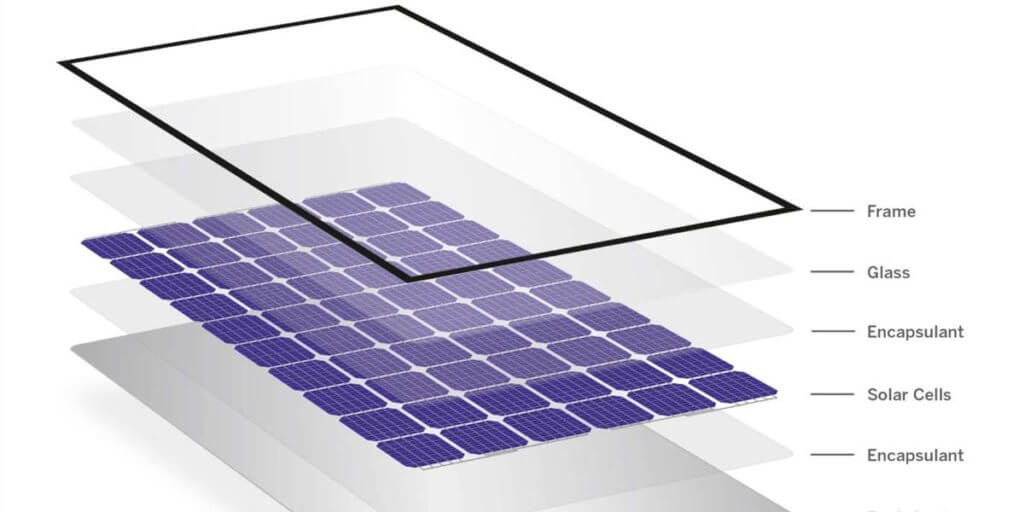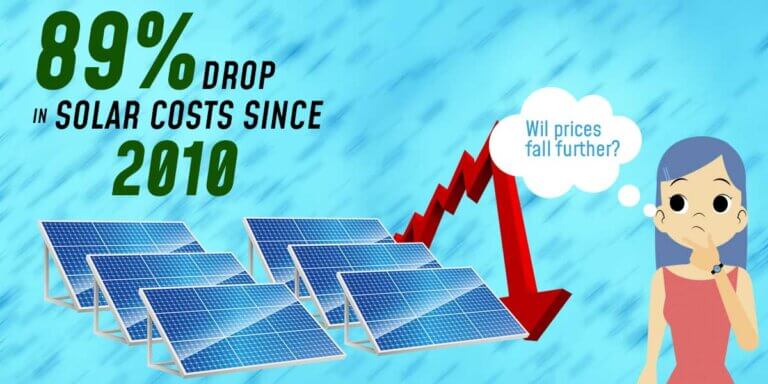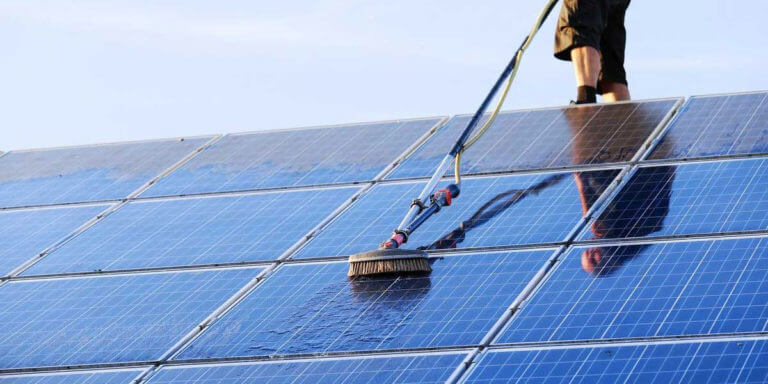Solar Panel Size | Solar Panel Dimensions and Weight Guide

Yes, solar panel size and solar panel dimensions does matter when it comes to solar panels, but there are many other ways to assess size and dimensions. Solar panels are available in various sizes, which are measured in square feet, or how much area they take up on your roof. The power rating is another method of determining the size.
These days, solar panels come in a variety of designs and sizes. The most popular panels used in today’s residential and commercial installations, on the other hand, come in two basic sizes. When it comes to solar panel installation, one must thoroughly understand its size, dimensions, and weight.
So, in this review, we’ve talked about these points to help you understand.
Understanding Solar Panel Dimensions, Size, Composition

As you may know, the cells are the core of a solar panel. The number of cells and the type of cells (Monocrystalline & Poly-crystalline) impacts the panel’s output voltage and the size of the solar panel.
The larger the panel and the higher the available output voltage, the more cells there are in it. Inferring from this concept, the 72-cell panel, in addition to being larger, will also have a higher voltage than the 60-cell panel.
As a result, the higher the output voltage, the more connected cells in the panel. However, the cells must be linked in series for the voltage to add up.
Currently, two solar cell sizes dominate the market:
60-cell panels 39′′ x 66′′ (3.25 feet x 5.5 feet)
72-cell panels 39′′ x 77′′ (3.25 feet x 6.42 feet)
Sun Power generally uses the 5″ in their 96-cell panels to make them seem like regular 60-cell panels.
1. Standard Solar Panel Dimensions

The most prevalent solar panel configurations are 60-cell and 72-cell. A solar cell is a square measuring 6″ by 6″ in size. In a 6×10 grid, 60-cell panels are set out. The 72-cell panels are arranged in a 6×12 grid, giving them a height of nearly a foot.
These are the conventional solar panel sizes for most home and commercial installations with an inch on either side. There will be some fluctuation because different manufacturers use different frame sizes. Other panel size configurations are available on the market, but they are far less common.
2. Solar Panel Size Chart
| BRAND | LENGTH (inches) | DEPTH (inches) | WIDTH (inches) |
| Sun power x series | 41.02 | 1.8 | 69.3 |
| LG NeoN 2 | 40 | 1.8 | 69.3 |
| Hanwha Q cells | 39.04 | 1.8 | 69.3 |
| Trina Allmax X 60 cells | 39.1 | 1.8 | 69.3 |
| Jinko Cheetah | 39.4 | 1.8 | 69.3 |
| Solaria Power XT | 43.9 | 1.8 | 69.3 |
3. How Much Do Solar Panels Weigh?
People frequently inquire about the weight of solar panels and their physical dimensions. Panels are heavy, and lifting them onto your roof might be difficult, especially if you’re working alone.
The full-sized panels weigh between 40 and 60 pounds as a rule of thumb. It varies depending on the products that the producer uses. The weight of some of the panels we have available is shown in the chart below:
| Product | Cell Count | Weight |
|---|---|---|
| Astronergy 365 W | 72 | 48.06 lbs |
| Mission Solar 385 W | 36 | 52 lbs |
| Rec Twin peak | 72 | 61.8lbs |
| Solarland SLP 120 | 72 | 23lbs |
| Waaree solar 250 W | 72 | 49.6lbs |
One person may carry a 60-cell panel, but 72-cell panels, which are almost 6 feet tall, are best carried by two people. They can easily swing and throw you off balance, especially in windy situations, so it is necessary to take relevant precautions.
How Many Solar Panels Does a Common Household Need?

We have explained in our previous articles how to calculate the number of solar panels required to run an air conditioner and the number of solar panels required to run a refrigerator. But, how do you calculate the number of solar panels required for your entire household and not just a single appliance?
The power produced by households is used in two ways:
- Your house’s average monthly power consumption.
- Average monthly solar power generation at your place.
Simply check your most recent month’s electricity bill to determine your house’s average monthly power consumption for the previous 12 months.
It’s time to figure out your average monthly solar power generation once you’ve figured out your typical monthly power use.
The average monthly solar energy production is between 80 and 130 kWh. This figure depends on sunlight hours. If you live in a cold country or one with fewer sun hours, don’t use this amount; instead, search on the internet for your region’s monthly solar power generation.
You’ll obtain a figure for your monthly solar power generation. If you don’t want to do that, assume a monthly solar power generation of 100 kWh in your area. If your state or country has a consistent number of sun hours throughout the year, you can estimate that your locality’s average monthly solar power generation is 115 kWh.
How to Calculate the Number of Solar Panels Needed To Power A House?
- Calculate your monthly electricity use on a monthly basis.
- To calculate your solar panel requirements in kilowatts, divide your average monthly power use by your average monthly solar power generation (115 kWh if you live in India).
- Divide your solar energy requirements in kilowatts by the wattage of one solar panel.
For example, How many solar panels will you require if you live in Delhi and estimate your house’s average monthly electricity usage to be 860 kWh?
- The average monthly power use for your home is 860 kWh.
- 115 kWh is your average monthly solar power generation.
- To calculate the kW of solar panels, divide the average monthly power use by the average monthly power generation: Solar panels with a capacity of 860 kWh / 115 kWh = 7.47 kW.
- Divide the 7.47 kilowatts of solar panels by the individual solar panel wattage, which is 330 watts: 7,470watts/330 watts =22.63, or nearly 23 solar panels.
Conclusion
The amount of electricity generated is influenced by the solar panel size, among other criteria. The amount of space available influences the number of panels you may put in. As a result, it’s important to think about these considerations while choosing solar panels.
With the help of this solar panel size and solar panel dimensions guide, you should have a basic understanding of the different solar panel sizes available. You should be able to quickly calculate the solar panel size you require based on their average weights and efficiency ratings. Once you’ve decided on all of these aspects, you can call a solar panel supplier to install them on your home or office roof.






